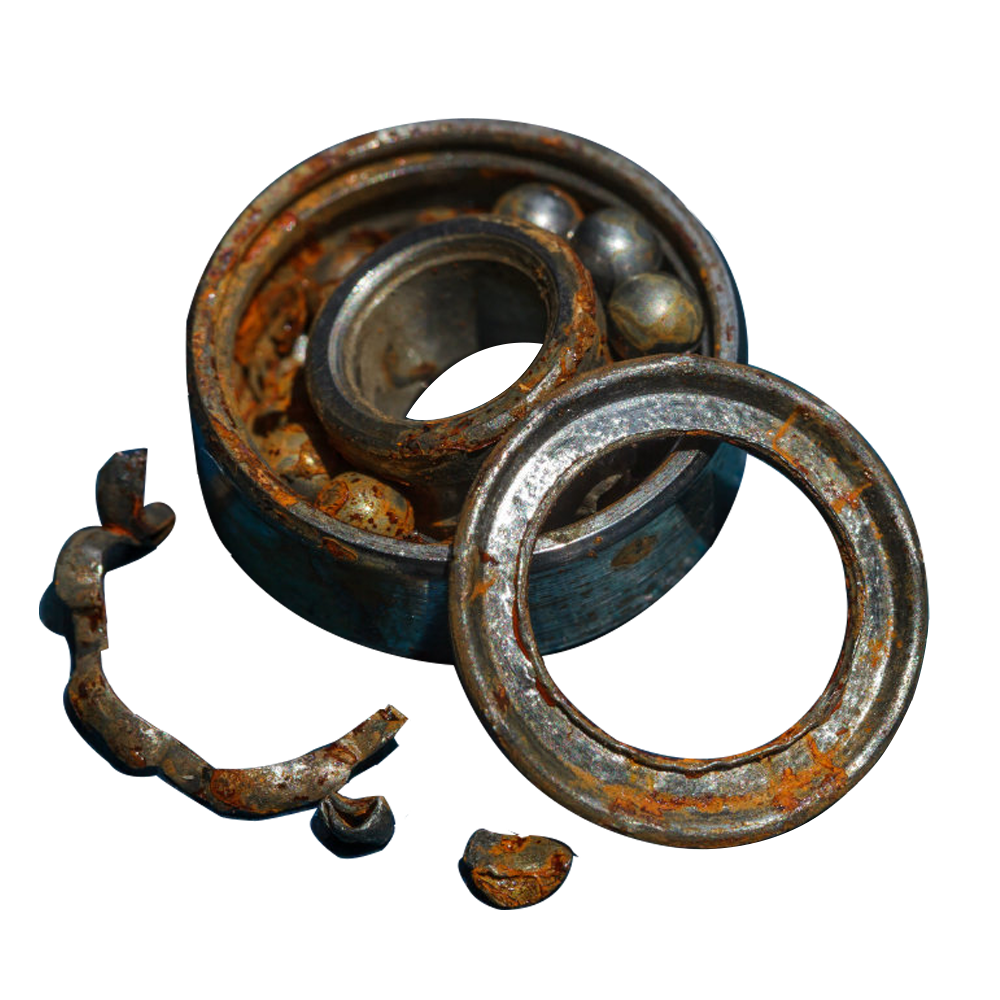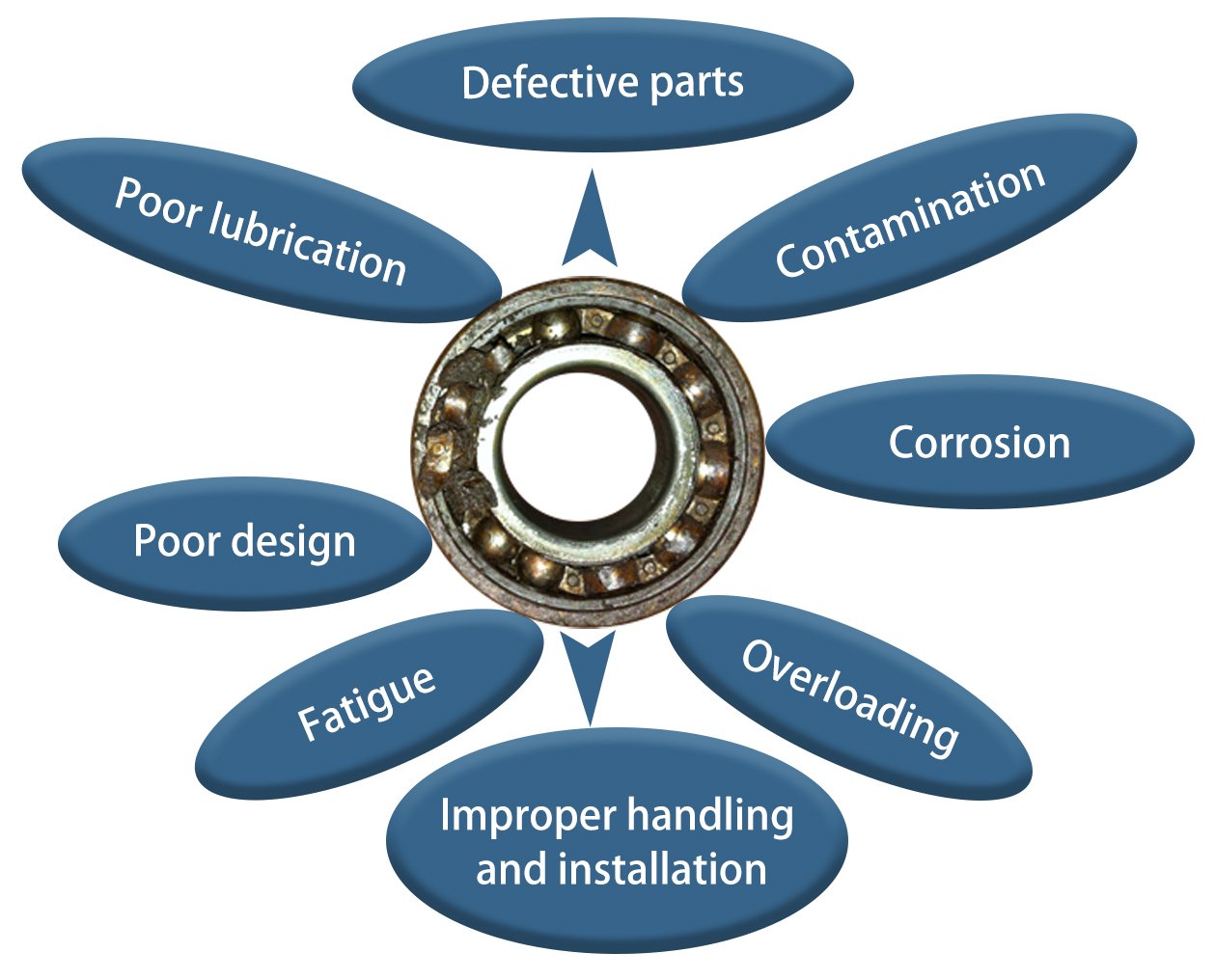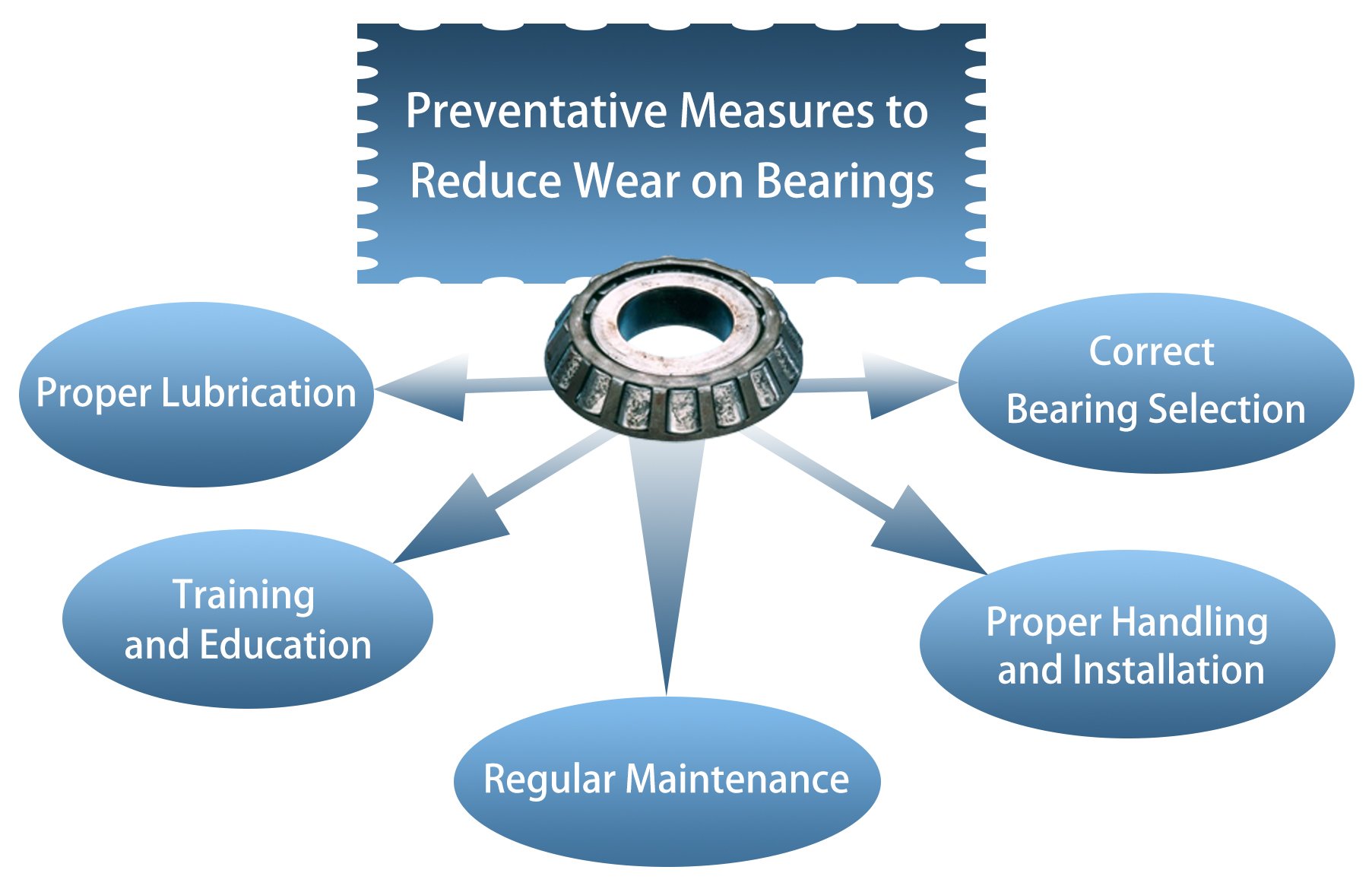How to Prevent Bearing Failures: Tips and Techniques to Reduce Wear on Bearings
Bearing failures can be a major headache for any facility, causing increased downtime, high-maintenance costs, missed deliveries, loss of revenue and, in some extreme cases, may even injure workers. When a bearing fails, it negatively impacts your facility, your reputation and your bottom line. Therefore, it is important to take preventative measures to increase the lifespan of your bearings and prevent improper wear on them.

Bearing Failure
What is a Bearing Failure?
Simply put, a bearing failure occurs whenever a bearing fails to meet its expected lifespan or calculated performance levels. Bearings are often overlooked parts of the process, despite carrying the body weight and production load. They often remain invisible until there is a bearing failure in the facility.
Bearing failures are more common than you think, and even with careful planning and normal maintenance, they can still fail unexpectedly or prematurely in an application. Less than 30% of bearings ever meet their determined fatigue limit and 'wear out' in their application. It all starts with the original equipment manager (OEM). The OEM selects bearings for each application in conjunction with the manufacturer's designed life expectancy based on a fatigued spall failure.
Why do Bearings Fail?
In general, there are a handful of common reasons why bearings fail:

Causes of bearing failure
Inadequate or improper lubrication
One of the most common reasons for bearing failure is inadequate or improper bearing lubrication. Lubrication is essential for ensuring that bearings operate smoothly and that wear and tear is minimized. Without sufficient lubrication, bearings can overheat, cause increased friction, and eventually break down.
Contamination
Contamination is another common reason for bearing failure. Foreign particles, such as dust or dirt, can get into the bearing and cause damage to the surface. This can lead to premature wear and tear, and ultimately failure.
Improper handling and installation
Bearings need to be handled and installed with care. If they are mishandled or improperly installed, it can cause damage to the bearing that may not be apparent until later. This can lead to premature wear and tear, and ultimately failure.
Overloading
Bearings are designed to carry a certain load, and if they are overloaded, it can cause them to break down prematurely. Overloading can be caused by improper sizing, improper application, or simply by carrying too much weight.
Misalignment: Misalignment can cause uneven wear on the bearing, which can lead to premature failure. Bearings need to be properly aligned to ensure that they operate smoothly and that wear and tear is minimized.
Corrosion
Corrosion is another common reason for bearing failure. Corrosion can occur due to exposure to moisture, high temperatures, or other environmental factors. It can cause the bearing to become pitted and damaged, leading to premature wear and tear.
Fatigue
Fatigue is a common reason for bearing failure. Bearings are designed to withstand a certain number of cycles, and if they are subjected to more cycles than they can handle, they will eventually fail. This can be caused by excessive vibration, high speeds, or other factors.
Poor design
Finally, poor design can also cause bearing failure. If the bearing is not designed properly, it may not be able to withstand the loads and stresses that it is subjected to. This can lead to premature wear and tear, and ultimately failure.
The consequences of bearing failure are far-reaching for your facility. These can include increased downtime, high-maintenance costs, missed deliveries, loss of revenue and, in some extreme cases, may injure workers. Therefore, it is important to take preventative measures to increase the lifespan of your bearings and prevent improper wear on them.
Preventative Measures to Reduce Wear on Bearings

Preventative Measures for Bearing Failures
Proper Lubrication
Lubrication is critical to ensuring the proper function of bearings. Proper lubrication can extend bearing life, reduce wear and tear, and prevent overheating. It's important to use the correct type of lubricant for the bearing and the application. Over-lubrication can be just as damaging as under-lubrication, so it's important to follow the manufacturer's recommendations for lubrication frequency and amount.
Regular Maintenance
Regular maintenance is key to ensuring the proper function and longevity of bearings. Routine inspections can identify issues before they become serious problems. Proper maintenance includes monitoring lubrication levels and cleanliness, checking for signs of wear, and ensuring proper alignment.
Correct Bearing Selection
Choosing the correct bearing for the application is essential to ensuring proper function and longevity. Factors to consider include load capacity, speed, and temperature requirements. It's important to work with a knowledgeable supplier who can help you select the right bearing for your application.
Proper Handling and Installation
Proper handling and installation of bearings is essential to preventing premature failure. Ensure that bearings are stored and transported in a clean, dry, and vibration-free environment. During installation, ensure that bearings are properly aligned, and torque is applied correctly.
Training and Education
Training and education are essential to preventing premature bearing failure. Ensure that your team is trained on proper handling and installation techniques, as well as lubrication and maintenance procedures. Regular training can help prevent common issues and reduce downtime.
Conclusion
Bearing failures can have serious consequences for your facility, including increased downtime, high-maintenance costs, and lost revenue. By understanding the common causes of bearing failure and implementing preventative measures, you can reduce wear on bearings and extend their life. Proper lubrication, regular maintenance, correct bearing selection, proper handling and installation, and training and education are all key to ensuring the proper function and longevity of bearings. By taking a proactive approach to bearing maintenance, you can prevent costly failures and ensure the smooth operation of your facility.
Keep Learning








